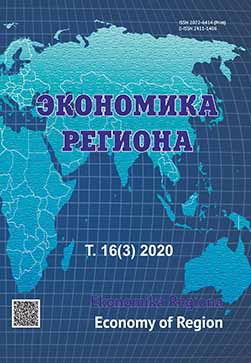Экономический рост как важнейший фактор снижения энергоемкости валового регионального продукта
Economic Growth as an Essential Factor for Reducing the Energy Intensity of the Gross Regional Product
Author(s): Vladimir Andreevich TsybatovSubject(s): Economy
Published by: Институт экономики Уральского отделения Российской академии наук
Keywords: energy intensity of GRP; economic growth; fuel and energy industry; capital intensity; economic model; energy model; development scenario; forecasting; energy strategy; targets
Summary/Abstract: Creating regional programs for energy efficient development, policymakers rely on the targets of the Federal Energy Strategy, planning to reduce the energy intensity of gross regional product (GRP) by 40 % or more until 2035. Therefore, it is necessary to examine the validity of the set targets, as well as the limitations occur in the process of GRP energy intensity reduction. Based on the model calculations, the study investigates the possibilities and limitations of reducing GRP energy intensity in the Russian Federation in the period 2018 — 2035 on the example of the Samara region. The interrelated economic and energy models of the Samara region allowed calculating and testing the scenarios of regional energy efficient development. The analysis considered the targets of state energy saving and energy efficiency programmes, declared in the draft Energy Strategy of the Russian Federation until 2035. The research established that economic growth is essential for reducing GRP energy intensity. The increase in economic growth means its greater contribution to GRP energy intensity reduction. Economic growth reduces the energy intensity of GRP due to several reasons. They include savings from the increase in the production of goods and services; advanced growth of GRP economy compared to the growth of capital-intensive fuel and energy industry; growing lag between the amount of energy-consuming equipment of the population and the value of GRP. The example of the Samara region demonstrates that it is possible to reduce GRP energy intensity by 40 % in the period 2018–2035 only with an average annual economic growth of at least 5 %, including the implementation of all industrial energy saving and energy efficiency programmes stated in the Energy Strategy. The same conclusions are valid for the Russian economy in general. If the average annual development rate of the Russian economy is below 4 %-5 %, it will be impossible to reach the main target of the Energy Strategy of the Russian Federation until 2035, which is the reduction of energy intensity of the gross domestic product (GDP) in 2035 by 34 % compared to 2015. Public authorities can use the study results when developing strategic planning documents.
Journal: Экономика региона
- Issue Year: 16/2020
- Issue No: 3
- Page Range: 739-753
- Page Count: 15
- Language: Russian

